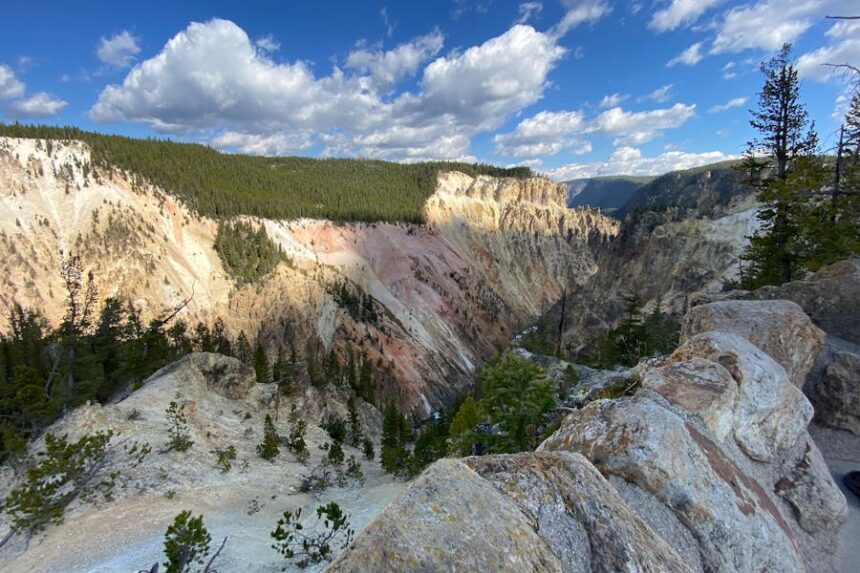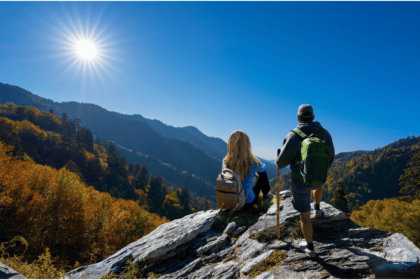When planning a nature getaway, many travelers consider the classic debate: state parks vs national parks. These natural preserves both offer breathtaking scenery, recreation opportunities, and a chance to reconnect with nature. However, their differences often determine how people choose between them. From funding and management to accessibility and conservation goals, understanding these distinctions can shape your outdoor experience.
- What Are the Defining Characteristics of State Parks vs National Parks?
- How Are State Parks vs National Parks Managed and Funded?
- Why Do People Choose State Parks vs National Parks for Trips?
- When Is the Best Time to Visit State Parks vs National Parks?
- Comparing Visitor Experiences in State Parks vs National Parks
- Nature and Scenery
- Recreational Activities
- Educational Programs
- Wildlife and Ecosystems
- Visitor Demographics
- Bottom Line
- FAQ’s
In this detailed guide, we’ll uncover what truly sets state parks vs national parks. Whether you’re a weekend hiker or planning a cross-country nature tour, knowing these differences can enhance your trip, support your values, and help you make the most of America’s vast park system.
What Are the Defining Characteristics of State Parks vs National Parks?
State parks and national parks serve different purposes rooted in their creation and management. State parks are managed at the state level, typically by a department of natural resources or a similar agency. Their main goal is to provide recreational opportunities for local residents. Hiking trails, picnic areas, and campgrounds dominate the landscape, often accompanied by lower entrance fees and fewer regulations.
National parks, in contrast, are operated by the National Park Service (NPS), a federal agency under the U.S. Department of the Interior. These parks are designated for their national significance, whether geological, ecological, historical, or cultural. With more extensive preservation mandates, national parks tend to restrict certain activities to protect delicate ecosystems and historical artifacts.
One notable difference is scale. National parks often span thousands or even millions of acres, while state parks tend to be smaller and closer to urban centers. This affects both the biodiversity within the parks and the types of activities available.
The funding sources for each park type also differ. National parks are funded by federal budgets, grants, and entrance fees. State parks rely heavily on state budgets, seasonal revenue, and sometimes donations or volunteer efforts. This influences everything from the number of rangers on duty to the upkeep of trails and facilities.
Finally, visitation patterns diverge. National parks often attract international tourists and bucket-list adventurers, while state parks serve more as weekend retreats or family outing destinations. Understanding this helps travelers better plan their experience based on crowd levels, costs, and conservation expectations.
How Are State Parks vs National Parks Managed and Funded?
Though both types of parks serve the public by preserving natural areas and offering recreational opportunities, their management and funding structures differ significantly, impacting how they operate and serve visitors.
State-Level Management Structure
State parks are governed by individual states, typically through departments such as the Department of Natural Resources or the Department of Parks and Recreation. These agencies create and enforce their regulations related to park access, recreational activities like camping or hunting, and conservation efforts. This localized oversight allows states to tailor their park policies to regional needs and priorities.
Federal Oversight of National Parks
National parks, on the other hand, are overseen by the National Park Service (NPS), a federal agency tasked with protecting these lands under a consistent national framework. The NPS enforces federal environmental laws and prioritizes long-term preservation, often placing strict limits on development and recreational use to safeguard natural and cultural resources.
Funding and Staffing
Funding sources also vary. State parks typically rely on a mix of state budgets, entrance and usage fees, and community or nonprofit support. National parks receive federal allocations, visitor fees, and may form partnerships with conservation organizations. In terms of staffing, national parks usually employ more full-time rangers and specialized personnel, while state parks often utilize seasonal staff or volunteers, influencing the availability of services and maintenance.
Why Do People Choose State Parks vs National Parks for Trips?
When planning outdoor getaways, visitors often weigh convenience, cost, and experience before choosing between a state park or a national park. Each park type caters to different needs and expectations.
- Accessibility
State parks are often located closer to urban areas, making them an excellent choice for short getaways or spontaneous day trips with minimal travel time. - Affordability
Budget-conscious travelers appreciate state parks for their lower entrance and camping fees, making outdoor adventures more accessible for families and frequent visitors. - Crowd Size
National parks, especially iconic ones like Yellowstone or Yosemite, can experience large crowds during peak seasons, while state parks tend to be less congested and more peaceful. - Activities Offered
State parks usually allow a broader range of recreational activities such as fishing, kayaking, biking, and even hunting, providing more flexible outdoor fun. - Preservation and Scenery
National parks focus more on preservation and offer rare wildlife sightings and unique landscapes, appealing to those seeking awe-inspiring natural wonders. - Length of Stay
Travelers planning longer trips or vacations often prefer national parks, which are better equipped for extended stays with lodges, guided tours, and multiple-day hiking routes.
When Is the Best Time to Visit State Parks vs National Parks?
Timing your visit to either a state park or a national park can significantly shape the quality of your experience. Each type of park responds differently to seasonal patterns, visitor volume, and regional climate variations, making strategic planning an important part of any outdoor trip.
State parks, scattered across various states and regions, often mirror local seasonal changes more vividly. In northern or temperate areas, spring and fall are among the most favorable times to visit. During spring, wildflowers bloom, and temperatures remain moderate, making hiking and camping more enjoyable. Fall offers a visual treat with changing foliage, crisp air, and fewer bugs. Summer is popular due to school breaks and family vacations, but it also brings larger crowds, hotter temperatures, and increased demand for campsites, especially in easily accessible or lakefront parks.
National parks, due to their sheer scale and diversity, require more nuanced timing based on geography and purpose. High-altitude or mountainous parks such as Yellowstone or Glacier are best explored in summer, when trails are open and wildlife is most visible. On the other hand, desert parks like Joshua Tree or Death Valley are more tolerable in the cooler winter months. Planning is crucial for national parks, as many require advanced reservations for campsites or timed entries during peak seasons. Closures due to snow, wildfire danger, or flooding are also more common and can affect access.
Ultimately, the best time to visit depends on what you seek. If your goal is solitude, photography, or wildlife observation, the shoulder seasons—early spring or late fall—offer quieter and more serene experiences. Those interested in ranger-led programs, educational tours, or seasonal festivals may prefer summer or early autumn, when events are more frequent and visitor services are fully operational
Comparing Visitor Experiences in State Parks vs National Parks
While both park systems offer enriching outdoor experiences, the scale, focus, and visitor appeal differ significantly between state and national parks.
Nature and Scenery
National parks typically boast more dramatic landscapes and rare natural features. State parks offer localized beauty, like lakes, forests, or historical sites.
Recreational Activities
State parks focus on outdoor recreation, offering fishing, kayaking, and family camping. National parks prioritize preservation so that some recreational activities may be restricted.
Educational Programs
National parks often include museums, exhibits, and ranger talks. State parks may have fewer but more locally-focused educational offerings.
Wildlife and Ecosystems
National parks protect larger and more diverse ecosystems. Visitors may see bears, bison, or rare birds. State parks host common species and sometimes regional rarities.
Visitor Demographics
State parks serve local and regional visitors. National parks attract global tourists and high-volume seasonal travelers.
Bottom Line
The differences between state parks vs national parks can help you tailor your outdoor adventures to your goals, budget, and expectations. While national parks offer unparalleled grandeur and ecological importance, state parks deliver convenient, budget-friendly escapes into nature. Both contribute vitally to the conservation of America’s natural heritage and deserve recognition in their own right.
Whether you’re seeking adventure, solitude, education, or just fresh air, the choice between state parks vs national parks depends on what kind of experience you want. Each option has its perks, and often, the best approach is to enjoy the benefits of both.
FAQ’s
Are state parks cheaper than national parks?
Yes, generally, state parks have lower entrance and camping fees, making them a more budget-friendly option for quick getaways and day trips with family or friends.
Can you camp in both state and national parks?
Absolutely. Both offer camping opportunities, but national parks often require advanced reservations due to higher demand and limited campground availability.
Do national parks have more wildlife?
Typically, yes. National parks cover larger, protected ecosystems that support a broader range of wildlife, offering better chances for natural encounters and biodiversity.
Are pets allowed in both types of parks?
Policies vary. State parks usually allow pets with leashes or in designated zones, while national parks are stricter to protect sensitive habitats and native animals.
Which parks are better for families?
State parks are often more family-oriented thanks to their lower costs, close-to-home locations, picnic areas, playgrounds, and easy hiking trails.




